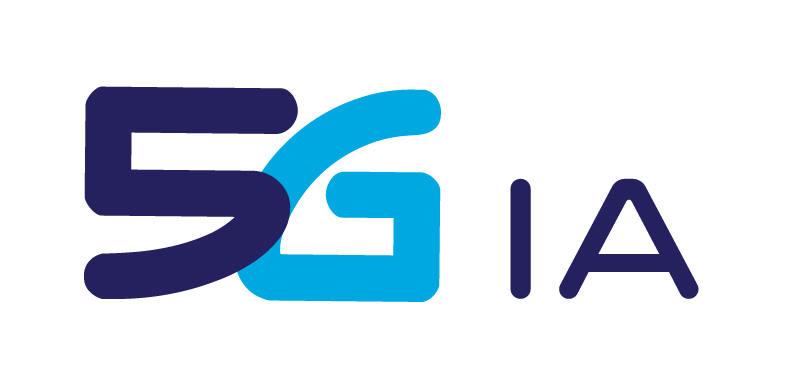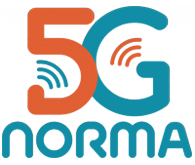

- About us
- Getting Involved
- Plans & Papers
- Events
- European 5G Activities
- Media & News
- Contact
Telecom industry and European academia join forces to develop a multiservice mobile network architecture for the 5G era
Telecom industry and European academia join forces to develop a multiservice mobile network architecture for the 5G era
1 July, 2015
Press Release
-
5G NORMA project, part of the 5G Infrastructure Public-Private Partnership (5GPPP) initiative, will define the overall 5G mobile network architecture, including radio and core networks, to meet the demanding 5G multiservice requirements
-
Consortium composed of 13 partners among leading industry vendors, operators, IT companies, small and medium-sized enterprises and academic institutions
Espoo, Finland – 1 July 2015
Industry vendors, operators, IT companies, small and medium-sized enterprises and academia in Europe have joined forces to develop a novel, adaptive and future-proof mobile network architecture for the 5G era. As part of the 5GPPP initiative, 5G NORMA (5G Novel Radio Multiservice adaptive network Architecture) will propose an end-to-end architecture that takes into consideration both Radio Access Network (RAN) and Core Network aspects. The consortium will be working over a period of 30 months, beginning in July 2015, to meet the key objectives of creating and disseminating innovative concepts on the mobile network architecture for the 5G era.
5G networks need to meet a wide array of diverse and extreme requirements
There will be a need for super fast and reliable connectivity with virtually zero latency for use cases such as remote control of robots, and support for billions of sensors and things. 5G will also need to provide consistent and high quality connectivity for people and things. In addition, 5G networks will combine revolutionary technologies and existing mobile radio generations, as well as Wi-Fi, into a new system. A new mobile network architecture is required to manage these complex multi-layer and multi-technology networks, and to build in flexibility even for applications that are yet to be envisioned.
5G NORMA: a novel, multiservice mobile network architecture
With the 5G NORMA project, leading players in the mobile ecosystem aim to underpin Europe’s leadership position in 5G. The NORMA approach breaks away from the rigid legacy network paradigm. It will on-demand adapt the use of the mobile network (RAN and Core Network) resources to the service requirements, the variations of the traffic demands over time and location, and the network topology, which include the available front/backhaul capacity.
The consortium envisions the architecture will enable unprecedented levels of network customizability to ensure that stringent performance, security, cost and energy requirements are met. It will also provide an API-driven architectural openness, fueling economic growth through over-the-top innovation.
The technical approach is based on the innovative concept of adaptive (de)composition and allocation of network functions, which flexibly decomposes the network functions and places the resulting functions in the most appropriate location. By doing so, access and core functions may no longer reside in different locations, which is exploited to jointly optimize their operation whenever possible. The adaptability of the architecture is further strengthened by the innovative software-defined mobile network control and mobile multi-tenancy concepts and underpinned by corroborating demonstrations.
A socio-economic analysis of the benefits of 5G NORMA innovations will also be conducted. This will determine the value to the wireless industry, the users in society and the public sphere of enhanced services enabled by the proposed architecture.
Dr. Werner Mohr, Chairman of the 5GPPP Association, said: “5G is not only about new radio access technology, network architecture will play an important role as well. 5G networks will have to be programmable, software driven and managed holistically to enable a diverse range of services in a profitable way. With 5G NORMA, the consortium aims to ensure economic sustainability of the network operation and open opportunities for new players, while leveraging a future-proof architecture in a cost- and energy-effective way.”
5G NORMA deliverables
The consortium will be working over a period of 30 months, beginning in July 2015. Key objectives include the creation and dissemination of innovative concepts on the 5G mobile network architecture for the 5G era. Some of these may be captured in products or patents, while others may emerge from the process and working engagements. Emphasis will also be placed on commercialization, including partnerships and start-up creation.
Industry players included in the consortium
Vendors and IT: Alcatel-Lucent, NEC, Nokia Networks, ATOS
Operators: Deutsche Telekom, Orange, Telefonica
Small and Medium-sized Enterprises: Azcom Technology, Nomor Research, Real Wireless
Academia: University Kaiserslautern in Germany, Kings College London, University Carlos III Madrid
Nokia Networks is a major force driving and participating in 5G research and industry collaboration. It looks at the 5G network architecture as key to providing a 5G solution that integrates new and mobile radio generations to meet the 5G requirements. Nokia Networks is leading the 5G NORMA consortium. It is also cooperating with key academic partners and is active in various events such as the Brooklyn 5G Summit, VTC Spring, and ICC to discuss with the research community how to achieve this goal.
Click to Tweet: New 5GPPP consortium led by @nokianetworks to develop 5G multiservice mobile network architecture http://nokia.ly/1LzNsI3 #FutureWorks
Did you know?
-
Nokia Networks intensively collaborates with leading universities in Europe, the USA and China to make the 5G concept and technologies as viable and futureproof as possible.
-
Nokia Networks has already developed a concept for the programmable and software-driven networks of the future with Proof of Concepts available.
-
At the Brooklyn 5G Summit in April 2015, Nokia Networks showcased 5G cellular technology, delivering peak speeds of 10 Gbps over the air at realistic conditions, using mature technologies such as 2×2 MIMO.
Resources:
-
Blog: Brooklyn event crystallizes 5G advances
-
Webinar on demand: Meet your future: Technology Vision 2020 reality check
-
Whitepaper: Network architecture for the 5G era
-
Insight newsletter article: Closer and closer, 5G keeps getting closer
Connect with Nokia Networks:
TAGS: 5G, network architecture, Nokia, 5GPPP
About Nokia
By focusing on the human possibilities of technology, Nokia embraces the connected world to help people thrive. Our three businesses are leaders in their fields. Nokia Networks provides broadband infrastructure software and services, HERE provides mapping, navigation and location intelligence, and Nokia Technologies provides advanced technology development and licensing. www.nokia.com
Nokia Networks, which provides broadband infrastructure, software and services, operates at the forefront of our industry. From the first ever call on GSM to the first call on LTE, we have set the pace of innovation, a record that continues with future technologies such as 5G. Together with our operator customers, who serve close to 5 billion subscribers, we are embracing the opportunity of the connected world and helping to solve its challenges.
http://networks.nokia.com/
Media Enquiries
Nokia Networks
Media Relations
Phone: +358 7140 02869
E-mail: mediarelations@nokia.com







Share On